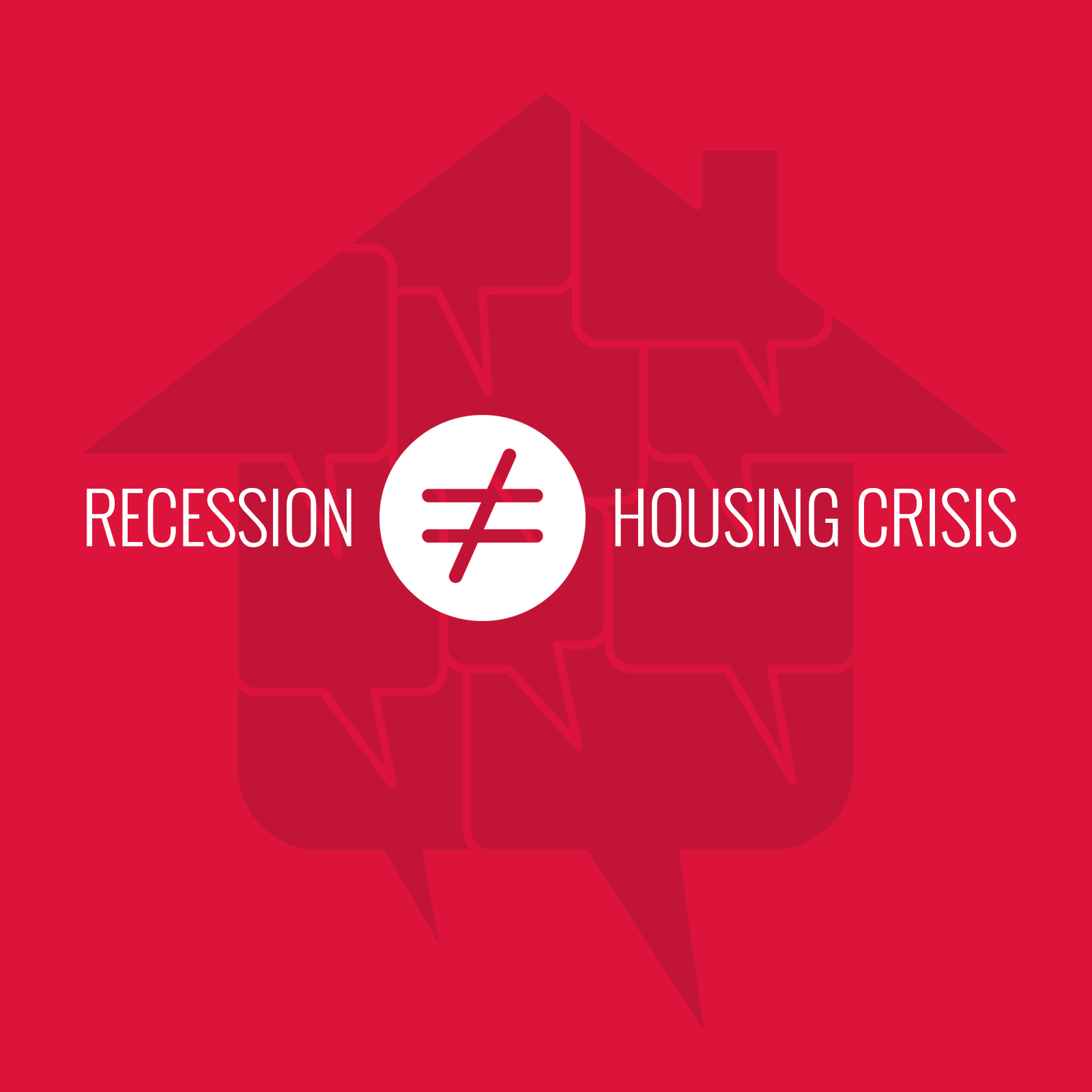COVID-19: How the Current Market is Unlike the 2008 Housing Crisis

We’re closely watching how the stock market, real estate market and our economy are adjusting daily to the current health crisis. Understandably, in-person showings and open houses have slowed significantly as we all do our part to curb the spread of this contagious virus. Despite that, closings are proceeding (albeit modified) and the economic experts and analysts we follow closely predict that the real estate market (and the country’s GDP) will bounce back aggressively once these necessary stay-at-home protocols are lifted.
Real Estate Economists predict that this will have a “time-limited impact” on the market. These analysts are forecasting real estate will be big and booming soon as we’re able to come out from under isolation. With all of the volatility in the stock market and uncertainty about the Coronavirus (COVID-19), some are concerned we may be headed for another housing crash like the one we experienced from 2006-2008. There are many reasons, however, indicating this real estate market is nothing like 2008. Here are five visuals to show the dramatic differences.
1. Mortgage standards are nothing like they were back then.
During the housing bubble, it was difficult NOT to get a mortgage. Today, it is tough to qualify. The Mortgage Bankers’ Association releases a Mortgage Credit Availability Index which is “a summary measure which indicates the availability of mortgage credit at a point in time.” The higher the index, the easier it is to get a mortgage. As shown below, during the housing bubble, the index skyrocketed. Currently, the index shows how getting a mortgage is even more difficult than it was before the bubble.
2. Prices are not soaring out of control.
Below is a graph showing annual house appreciation over the past six years, compared to the six years leading up to the height of the housing bubble. Though price appreciation has been quite strong recently, it is nowhere near the rise in prices that preceded the crash. There’s a stark difference between these two periods of time. Normal appreciation is 3.6%, so while current appreciation is higher than the historic norm, it’s certainly not accelerating beyond control as it did in the early 2000s.
3. We don’t have a surplus of homes on the market. We have a shortage.
The months’ supply of inventory needed to sustain a normal real estate market is approximately six months. Anything more than that is an overabundance and will causes prices to depreciate. Anything less than that is a shortage and will lead to continued appreciation. As the next graph shows, there were too many homes for sale in 2007, and that caused prices to tumble. Today, there’s a shortage of inventory which is causing an acceleration in home values.
4. Houses became too expensive to buy.
The affordability formula has three components: the price of the home, the wages earned by the purchaser, and the mortgage rate available at the time. Fourteen years ago, prices were high, wages were low, and mortgage rates were over 6%. Today, prices are still high. Wages, however, have increased and the mortgage rate is about 3.5%. That means the average family pays less of their monthly income toward their mortgage payment than they did back then. Here’s a graph showing that difference:
5. People are equity rich, not tapped out.
In the run-up to the housing bubble, homeowners were using their homes as a personal ATM machine. Many immediately withdrew their equity once it built up, and they learned their lesson in the process. Prices have risen nicely over the last few years, leading to over fifty percent of homes in the country having greater than 50% equity. But owners have not been tapping into it like the last time. Here is a table comparing the equity withdrawal over the last three years compared to 2005, 2006, and 2007. Homeowners have cashed out over $500 billion dollars less than before:
During the crash, home values began to fall, and sellers found themselves in a negative equity situation (where the amount of the mortgage they owned was greater than the value of their home). Some decided to walk away from their homes, and that led to a rash of distressed property listings (foreclosures and short sales), which sold at huge discounts, thus lowering the value of other homes in the area. That can’t happen today.
A special thanks to “Keeping Current Matters” for providing us this analysis and data.
How We’re Adjusting to Safely Serve Our Clients
Last, we want to address ways in which we’ve modified our usual business practices to ensure that we can continue to serve our clients selling and buying their homes – while adjusting to safely serve all parties and ensure we’re doing our part to flatten the curve.
1. Taking it online: Recorded video and/or live-streamed virtual showings
2. Suspending in-person showings where appropriate. For clients still showing their homes, taking measures to disinfect surfaces that may have been touched during showings.
3. Leveraging our Coming Soon channels for pre-marketing listings ahead of expected buyer demand
4. Utilizing Compass digital resources (Search Collections, Coming Soons, Digital Marketing, video, e-brochures, broker email marketing, virtual tours, online conferencing)
5. Apply new contract addendums released by the Chicago Association of Realtors that allows flexibility for writing and accepting offers
6. Helping clients get prepared for anticipated market rush when isolation measures are lifted
